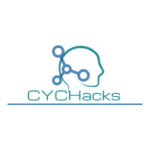In today’s digital-first business world, the difference between generating leads and converting them lies in how intelligently they’re distributed and managed. Sales teams that rely on outdated spreadsheets or manual assignment often lose high-value leads simply because the right person didn’t get the right lead at the right time.
That’s where smart CRM workflows and specialized platforms like Leads Commerce Software step in — automating distribution, enforcing accountability, and ensuring every lead is acted upon quickly. By combining CRM intelligence with structured Lead Commerce systems, businesses can significantly improve efficiency, conversion rates, and return on investment (ROI).
Table of Contents
The Hidden Cost of Poor Lead Distribution
A strong marketing funnel may generate thousands of leads — but without a system to route them effectively, ROI quickly erodes. Studies show that up to 50% of sales go to the vendor who responds first.
If your process relies on manual sorting or uneven assignment, chances are:
- High-value leads are getting delayed or ignored.
- Agents are overloaded or idle depending on manual allocation.
- Management lacks visibility into lead status and outcomes.
- Marketing can’t accurately assess which channels deliver quality leads.
These inefficiencies cost both time and revenue. Smart automation and the right Lead Commerce CRM can fix this.
What Is Smart Lead Distribution?
Smart lead distribution uses automation and rule-based logic to allocate leads dynamically — based on priority, geography, agent performance, or even product specialization.
Instead of assigning leads manually, Leads Commerce System can automatically:
- Categorizes incoming leads by quality or source.
- Scores them based on likelihood to convert.
- Routes them to the most relevant salesperson or partner.
- Tracks every interaction for accountability and analytics.
Why CRM Workflows Are Key to Maximizing ROI
Traditional CRMs store data. Smart CRMs act on data.
By creating workflows that automate lead handling from entry to conversion, you eliminate human error and speed up every stage of engagement. Here’s how Leads Commerce CRM workflows drive ROI:
1. Instant Response = Higher Conversions
When a lead enters your CRM, automation can trigger immediate actions — such as an SMS acknowledgment or assigning a salesperson within seconds. Fast response builds trust and dramatically increases the chance of conversion.
2. Balanced Lead Allocation
Workflows ensure each agent receives a fair, optimized share of leads. Criteria can include location, workload, conversion rate, or specialization. This reduces cherry-picking and prevents burnout among top performers.
3. Transparent Tracking & Accountability
Every lead’s journey is logged in the CRM — from assignment to closure. Managers can view who handled what, monitor lead aging, and identify bottlenecks. Transparency ensures consistent performance and quick corrective action.
4. Lead Aging and Reassignment Rules
A lead that sits untouched for too long loses value. Smart workflows automatically reassign idle leads after a set period, ensuring no opportunity goes stale. This not only improves response time but maximizes lead ROI.
5. Integrated Communication Channels
Platforms like Leads Commerce integrate calls, SMS, maps, and forms — letting agents connect instantly without switching platforms. Real-time communication shortens the lead-to-customer cycle and enhances productivity.
Designing High-ROI Lead Distribution Workflows
Building a successful lead distribution model requires balancing automation with business logic. Consider these best practices:
A. Segment and Score Your Leads
Not all leads are equal. Use data to classify leads by source, intent, or demographic. Apply lead scoring models so that premium leads get fast-tracked to senior sales reps while lower-value ones enter nurturing campaigns.
B. Define Clear Routing Rules
Establish automated routing rules based on region, skill set, or performance. For example:
- Leads from Tier-1 cities → Senior agents
- Product-specific leads → Specialized teams
- Overloaded agents → Automatically skip assignments
C. Track Every Stage in the CRM
Ensure your Lead Commerce CRM tracks the full lifecycle — from lead capture to closure. This visibility allows real-time reporting, performance benchmarking, and continuous optimization.
D. Implement Feedback Loops
Use dashboards and reports to identify patterns: Which agents convert best? Which sources yield poor quality? Feed this data back into your lead-buying and routing strategy to optimize ROI continuously.
E. Automate Notifications and Escalations
Missed follow-ups can be costly. Set up alerts for leads that go untouched for a certain time, or escalate critical leads to managers automatically. Timely action keeps your conversion pipeline healthy.
Principles of Leads Commerce
Leads Commerce Software allows businesses to:
- Distribute leads instantly across regions or teams
- Set custom pricing and tiers for premium or bulk leads
- Automate lead aging and reassign rules
- Track performance with dashboards and leaderboards
- Integrate communication tools directly into the CRM interface
With Leads Commerce, businesses move from reactive to proactive — managing leads like inventory, optimizing value per interaction, and reducing wastage. Whether you call it Leads Commerce CRM or Lead Commerce CRM, the goal is the same: smarter processes and measurable growth.
Measuring ROI from Lead Distribution
ROI isn’t just about revenue; it’s about efficiency. Key metrics to measure success include:
| Metric | What It Reveals |
| Lead Response Time | How quickly your team acts |
| Conversion Rate | The effectiveness of distribution |
| Agent Utilization | Workload balance and efficiency |
| Lead Aging | Time before contact or closure |
| Source ROI | Performance of each lead channel |
With accurate data and continuous improvement, your lead pipeline becomes predictable, scalable, and profitable.
Conclusion: Smarter Workflows, Stronger Returns
Lead generation is only half the battle — the real ROI lies in how you manage, distribute, and convert. Smart CRM workflows bridge the gap between marketing and sales, transforming raw leads into measurable revenue.
By automating distribution, monitoring performance, and integrating communications through a platform like Leads Commerce, you don’t just improve conversions — you build a repeatable, data-driven growth engine.
Alex is fascinated with “understanding” people. It’s actually what drives everything he does. He believes in a thoughtful exploration of how you shape your thoughts, experience of the world.

